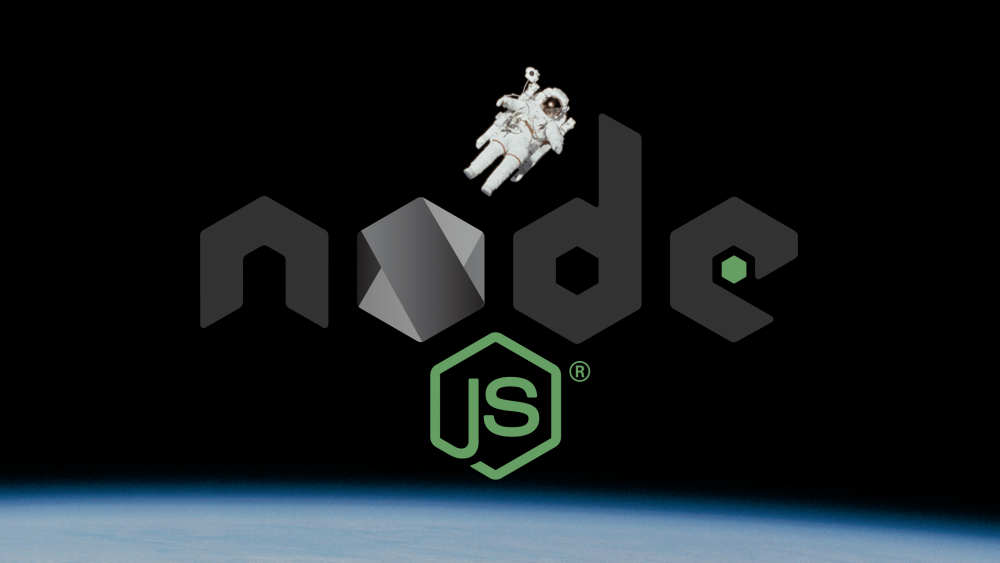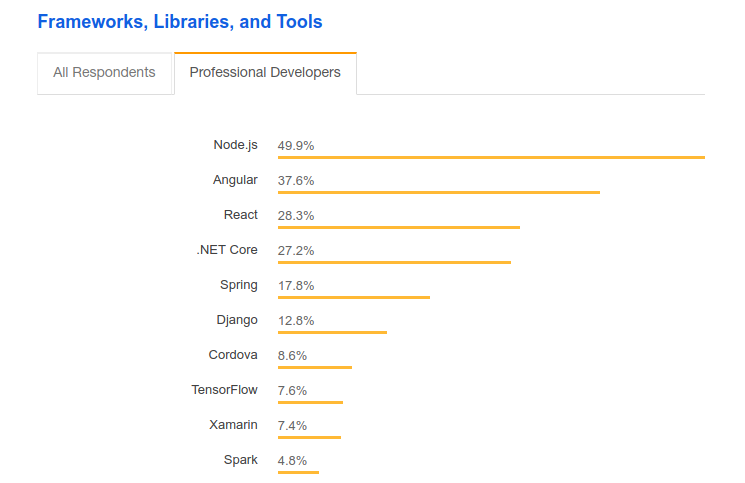If you think of the Javascript universe, node.js has gained traction like no other as a runtime environment and framework to build seamless application and software with cross-platform capabilities. Node.js has generated curiosity among the enterprises to develop applications and useful software based on node.js environment.
Node.js is a JavaScript runtime built on Chrome’s V8 JavaScript engine. It uses an event-driven, non-blocking I/O model that makes it lightweight and efficient. it has an all-in-one package manager, which is the largest ecosystem of open source libraries in the world. It is quite a tool to build seamless and scalable applications.
Today, we are going to explore four use cases of Node.js that shows the goldmine-Node.js has become for enterprises around the world.
Wallmart chose Node.js:

Wallmart.com, one of the biggest e-retail giants with over 23 million items to offer on sale and a rapidly expanding online retail company announced its retail partners and smaller vendors to transform their business into digital mode through Wallmart.com The website and mobile app has already seen nearly 20,000 hits/second during the holiday season. This lead Wallmart to ponder over the thought of building a fast, reliable and secure e-commerce system that can meet organizational goals and become its digital associate to success.
When Walmart decided to improve its website, it was on the verge of finding a front-end framework that can help their portal achieve beautiful interfaces for crucial components like shopping cart, checkouts, etc. on various pages of the website. So that it becomes easy for customers to reach it.
First, they chose React.js and when it came to the point of making a portal easily scalable and reliable for end-users, they turned to Node.js. Wallmart chose Node.js to build their mobile app and web portal to use the Node.js technology that helps enterprises to do much more with less code thanks to the asynchronous I/O, whereas the Java system needed code to manage parallel API calls.
For Wallmart, at any given time, as many as 30 concurrent businesses adding their content to the site with Wallmart’s internal content management systems on the web and native apps. This data is sent to the layer built on Node.js, which uses its asynchronous I/O based technology to delegate calls to multiple APIs reducing the overall network overhead for Wallmart servers. Node.js facilitates asynchronous APIs to enable more parallel calls that downstream the services.
Node.js for Uber:
Uber, the most disruptive ride-hailing online giant relied on Node.js for its e-commerce apps and web portals. Uber created a system that creates an enormous amount of supply notifications and demand requests. The ride that is requested does not just select the driver randomly.
It is designed with the X-nearest algorithm to ping a demand notification throughout the network with the nearest active drivers updated with every ride they take or move they make in the city. In April 2015, Uber reached 300 cities and this is how huge it has become.
This is where things got tricky, as there where millions of requests to be handled, which created some significant design and process problems with large distributed computing on a massive scale. So, Uber chose Node.js to design its core engineering that can handle such a large volume of requests, Uber’s engineering team then built three pieces of software with node.js to keep their matching system running all the time at the massive scale required: Ringpop, Tchannel, and Hyberbahn.
Ringpop:
It is a scalable, application-layer sharding that helps supply and demand requests to be in process, while matchmaking is carried out.
Tchannel:
It is a networking protocol designed to allow subsequent faster requests when slow requests are at the head of the line and create a high-performance forwarding path for those requests.
Hyberbahn:
It is a service-to-service discovery and routing system that allows demand requests to reach its place irrespective of system processes.
Uber has amalgamated this software with open-source node.js communities to allow users to make most of it and make user engagement more cohesive.
NASA with Node.js:

Never have anyone imagined this alliance, NASA astronauts suffered an accident caused by malfunction of spacesuits in 2013. After that when NASA() started a probe into it, it was baffled by the amount of data scattered all over the globe into several NASA servers and it became an Everest like situation.
So, the spacesuit developers decide to create a system to streamline all the data related to spacesuits to have better data analysis and find out newer alternatives to such problems in spacesuits.
The system uses a microservices architecture with separate APIs and applications built in Node.js to move data related to the EVA (Extra Vehicular Activities) spacesuits from dedicated databases to a cloud database. So, that astronauts and engineers can request data from one database for everything, which reduces the time of access to data by about 300%.
Fusion Marketing with Node.js:

Think of event-marketing with Node.js and you will be wondering how this can happen? Digital marketers are already hiring node.js developers to design their applications that can promote their marketing content. With marketing as a whole making a mark by Node.js deployment, there is little doubt on the use of its framework for an event marketing firm like Fusion.
Fusion Marketing carried out a campaign with Budweiser to promote the nationwide Bud & Burger Championships to find America’s next great burger chef. 70,000 consumers enjoyed a Bud, burger, music, and fun with friends in this campaign, which raised 10 million social media responses.
Node.js-powered digital experiences designed by the Fusion team that has been recently built include Twitter activated devices (such as vending machines), on-site voting systems (via SMS or push button), photo hunt and trivia games, numerous phone apps, microservices to ease Fusion’s reusable development practices, bartending bot, RFID Nerf War, and dozens of Node.js powered kiosks.
Concluding lines:
According to the Stackoverflow report of 2018, Node.js stands at the top with 49.9% as the most popular libraries set and frameworks in the Javascript universe.

As the data suggests that Node.js has been the front runner in Javascript universe and enterprises are looking to exploit Node.js more and more to extract agile advantage for their applications.
